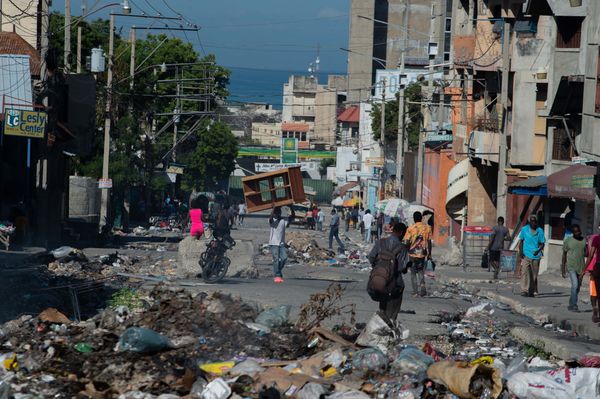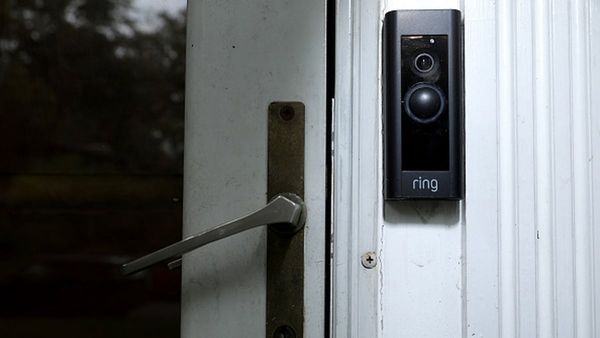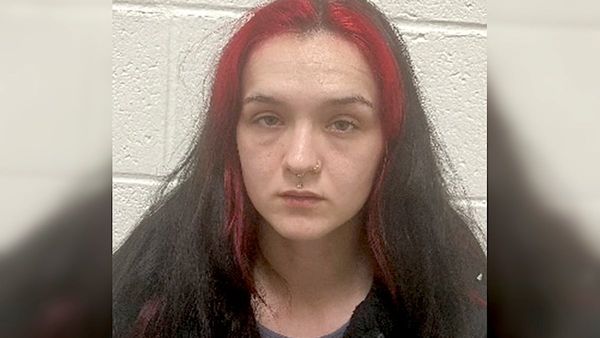
In 2012, José Pereira do Nascimento lost his home when the Santo Antônio hydroelectric station in Porto Velho, in Brazil’s north-west Amazon basin, opened its floodgates. The 3,568MW plant, built to provide power for 45 million people, released a muddy torrent that flooded his neighbourhood, forcing 120 families to evacuate.
“The river has gone out of control. We used to know when it would flood and when it would dry up. Now nobody knows any more,” says Nascimento, a rancher. “What men call progress has killed our history.”
His is a sad tale, but not uncommon in the Amazon, where public works driven by political ambition and economic upswing have replaced the wilderness with boom towns, highways, dams and farms. While these projects have brought paved roads, electricity and jobs, they have also caused upheaval through disorderly urbanisation, organised crime, rapid deforestation and climate disruption.
Fuelled by undaunted farmers and pioneering crop science, the soya bean industry has spread deep into the Amazon, blanketing the land, filling silos, helping convert Brazil into the world’s leading exporter and propelling the country’s agribusiness-boosted GDP.
Studies show that transport of soya beans and maize in the so-called Amazon arc – the infrastructure for hauling crops – grew 4.8% in the past year and by 288% in the past 10 years. As the agricultural belt expands, it is reshaping the map of the Amazonian environment, infrastructure, commerce, politics and livelihoods.
Brazil is now one of the world’s most bounteous agricultural producers, driven by harvests in the Cerrado, or central scrublands, and more recently in the Amazon biome. Soya beans are now cultivated in 25 of Brazil’s 27 states and cover more than half the nation’s arable land, from the pampas to the equator.
In the first five months of 2025, Brazil became the top soya bean exporter with 51.53m tonnes, a 4.93% increase from the same period of 2024.
Nearly 80% of soya beans are used for livestock and aquaculture, as China, the main buyer, uses 85% for animal feed, linking rising global meat demand to Brazil’s expanding exports.
Three decades ago, only four of the nine Amazonian states planted soya beans. Today, all nine do, helping to make the legume Brazil’s fastest-growing commodity. Mato Grosso, a huge state that straddles the Cerrado and the Amazon, is the nation’s top producer. In Rondônia, soya bean cultivation has more than doubled since 2019, as has the economy.
Under increasing public pressure, traders and big producers of the beans signed a “soya moratorium” in 2006, committing to forgo buying and selling soya beans grown on Amazonian plots deforested after 2008.
In 2023, the European Commission went further, not only banning the sale of soya beans – and six other commodity crops – harvested from recently cleared Amazonian lands, but also requiring buyers to prove their imports were deforestation-free.
The good news for agribusiness is that the tighter restrictions have not curtailed productivity. According to the latest report on the Amazon soya bean moratorium, although 95.6% of the expansion occurred in areas that were already affected by human activity before 2008, 16% of the area used to grow soya beans in the Amazon was cleared after the ban, and cultivation in untouched forest nearly tripled from 2018 to 2023, reaching 250,000 hectares (620,000 acres).
These figures used to be controversial in Brazil – a cause for celebration for large producers and denounced by environmentalists, who are preparing for Cop30, the critical UN climate conference in November.
Amazonian growers, however, continued to grumble that the soya moratorium was too prohibitive and violated free enterprise. They claimed that the rule barred land clearing even when another law permitted it – under Brazil’s 2012 forestry code, Amazonian farms may deforest up to 20% of their property.
Last year, three Amazonian governors, led by Rondônia’s Marcos Rocha, passed laws cancelling tax breaks to signatories of the moratorium, alleging the pact amounted to a soya cartel. They drew praise from local farmers, many of whom had been caught out clearing forest for planting.
Brazil’s anti-monopoly authority, Cade, agreed and, on 18 August, suspended the moratorium on the grounds that it unfairly advantaged a few big traders and farmers over medium and small-scale soya bean producers. A federal judge promptly overruled the antitrust board, and reinstated the moratorium.
But with the agricultural lobby flexing its muscles in Brasília, the quarrel is far from over. Even if the moratorium holds, risks to the rainforest and its inhabitants remain.
***
Nascimento – Zé Pereira to friends and family – has a front-row seat watching the soya bean boom. After shuttling between cheap hotels for nearly a year, he resettled in a small villa 16 miles (25km) from Porto Velho. Though he is not at risk of losing another home, the retired 70-year-old has watched uneasily as the land around him is surrendered to soya beans.
“They invaded our land,” says Nascimento. “But because we hadn’t built on our lot, they moved in, planted soya beans right up to the fence, and stayed.”
The cash crop has encircled his neighbourhood, overrun a local cemetery and now stretches to the horizon. Some days, the air is so thick with clouds of herbicides and pesticides that he can taste it. First, there’s “the tingling sensation” in his face. Then comes “the dizziness” and “difficulty breathing”, he says. “It’s not just me. Everyone over here feels it.”
To planters, this is the scent of progress.
Although most soya bean farmers are opportunists rather than villains in Amazon predation, the European Commission has traced strong indirect links between clearcutting and soya sowing. This is the case in Mato Grosso, where mechanised farms typically take over spent pasture, displacing ranchers such as Nascimento into pristine areas of neighbouring Pará, in the eastern Amazon basin.
That pattern also drives up the price of forested land, in the expectation of future gains once the trees are gone – “even though soya bean is planted years after”, the European Commission concluded.
Critically, however, even if no more trees fall to farmers, expanding soya bean plantations fuel the lobby’s demands for bigger and better infrastructure to store and ship their harvest to international markets. Hence the clamour to lay more asphalt, dredge rivers, build bridges and ports, and put down rails to haul ever bigger loads over already strained Amazonian transport networks.
Take the BR-364, the main highway connecting western Amazonia to ports on the Atlantic coast, where every harvest brings traffic to a standstill.
“We see 3,000 to 4,000 soya [articulated truck] rigs a day pass through Porto Velho,” says Adélio Barofaldi, chief executive of Rovema, a logistics company in Rondônia. “We are talking about 200km of gridlock every day.”
To ease bottlenecks, the federal government recently privatised part of the highway, with plans to duplicate a critical 60-mile stretch, tellingly nicknamed the “Agro North route”.
All to the detriment of the wilderness. A study found that nearly 95% of Amazon deforestation in Brazil falls within 3 miles of highways. In the Colombian Amazon, 80% of forest clearance occurs within less than 5 miles of roads.
But roads lead to more roads. A recent study comparing the knock-on effects of highways in tropical regions found that every mile of official “first-cut road” in the Amazon basin generated another 30 miles of secondary roads. And much more clearcutting and degradation happened around secondary tracks than official routes.
Soya’s success in the Americas is a cautionary tale, says Sandro Dutra e Silva, an environmental historian at Goiás State University studying the Cerrado. “Tropical agriculture has been hailed as a miracle, transforming Brazil into a farming power,” he says.
However, because the savanna sits on South America’s key aquifers, overproduction could disrupt watersheds and weather. “The risk is that this technological triumph might hypnotise people into destroying the Cerrado and Amazonia,” Dutra says.
Alexandre Nepomuceno, head of soya bean research at Embrapa, Brazil’s national agricultural institute – which developed soya strains that thrived in the tropics, boosting the seed’s use in the Amazon – cautions against vilifying scientific achievement for policy shortcomings.
He says the same enterprising scientific tradition that brought harvests to the equator can also help Amazonian growers tread more lightly on the land.
Mariangela Hungria, a Brazilian soil microbiology expert, won the 2025 World Food prize for her research into strains of bacteria that suck nitrogen from the air and attach it to the roots of soya beans, all but eliminating the need to import costly petroleum-based fertilisers.
Last year, such biological nitrogen fixation delivered Brazil a bumper crop, saved $25m (£18.5m) in imported fertiliser, and avoided emitting 230m tons of climate-warming carbon into the atmosphere.
Nepomuceno says that cutting-edge research can show the way. Still, science alone cannot save the Amazon. According to him, that is a job for policymakers, lawmakers and the public authorities that make the rules and enforce the red lines.
“Given that Brazil already has plenty of deforested areas,” Nepomuceno says, “we have no need of clearing more land to grow soya beans.”
• This article was amended on 29 September 2025 to include additional context regarding the use of soya beans for animal and fish feed.







